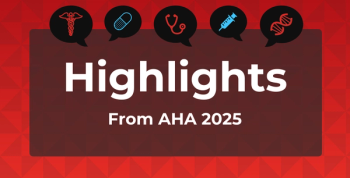
Can Twitter Be Used to Study Public Communication about Cardiovascular Disease?
A pilot analysis published online in JAMA Cardiology has concluded that Twitter offers promise as a data source for studying public communication about cardiovascular disease.
More than 300 million people use Twitter, but until now very little research has examined the potential data generated by several billion tweets to study public attitudes and behaviors associated with cardiovascular health. Now, a pilot analysis
Lauren Sinnenberg, BA, of the Perelman School of Medicine at the University of Pennsylvania, and colleagues set out to describe the volume and content of tweets associated with CVD, as well as the characteristics of Twitter users. Using Twitter to access a random sample of approximately 10 billion English-language tweets originating from US counties from July 23, 2009, to February 5, 2015, that were associated with CVD, the authors characterized each tweet relative to estimated user demographics. A random subset of 2500 tweets was hand-coded for content and modifiers.
Of 550,338 tweets associated with CVD, the terms “diabetes” (n = 239,989) and “myocardial infarction” (n = 269,907) were used more frequently than “heart failure” (n = 9414). Users who tweeted about CVD were more likely to be older than the general population of Twitter users (mean age, 28.7 years versus 25.4 years; P <.01) and less likely to be male (47.3% versus 48.8%; P <.010. Most tweets were associated with a health topic, the study authors said. Common subjects of tweets included risk factors (41.9%), awareness (23.4%), and management (21.6%) of CVD.
Tweets were characterized by tone, style, and perspective. Tweets associated with CVD often used metaphor, emotional language with positive or negative sentiment, and first-person accounts. Only 3% of tweets included a statement that the individual posting the tweet identified as having CVD. Twitter users responded to events, such as World Diabetes Day or celebrity deaths, within minutes or hours, and the peaks in discussions are easily identifiable in the Twitter data set.
Not only did the study identify a large volume of US-based tweets about CVD, the authors were also able to characterize volume, content, style, and the sender of the tweets, demonstrating the ability to distinguish signal from noise. Finally, the study showed that the data available on Twitter reflected real-time changes in discussion of a disease topic.
Although the value of Twitter for clinical research is still in its infancy, the researchers concluded that it may be useful for studying public communications about CVD. Its value and direct applications remain to be seen and merit further exploration, they wrote.
“We demonstrated that Twitter can provide important information about heart disease, and represents a unique opportunity to listen to patients and understand more about what they talk about and care about related to cardiovascular health,” senior author Raina M. Merchant, MD, MSHP, assistant professor of emergency medicine and director of Penn’s Social Media and Health Innovation Lab,
Newsletter
Stay ahead of policy, cost, and value—subscribe to AJMC for expert insights at the intersection of clinical care and health economics.









































